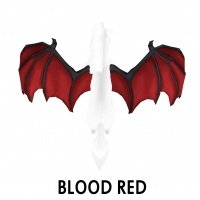In architecture, and specifically Gothic architecture, a gargoyle (/ˈɡɑːrɡɔɪl/) is carved or formed grotesque: 6–8 with a spout designed to convey water from a roof and away from the side of a building, thereby preventing it from running down masonry walls and eroding the mortar between. Architects often used multiple gargoyles on a building to divide the flow of rainwater off the roof to minimize potential damage from rainstorms. A trough is cut in the back of the gargoyle and rainwater typically exits through the gaping mouth. Gargoyles are usually elongated fantastical animals because their length determines how far water is directed from the wall. When Gothic flying buttresses were used, aqueducts were sometimes cut into the buttress to divert water over the aisle walls.





A French legend that sprang up around the name of St. Romanus (French: Romain; fl. c. 631–641 AD), the former chancellor of the Merovingian king Clotaire II who was made bishop of Rouen, relates how he delivered the country around Rouen from a monster called Gargouille or Goji. La Gargouille is said to have been the typical dragon with bat-like wings, a long neck, and the ability to breathe fire from its mouth. Multiple versions of the story are given, either that St. Romanus subdued the creature with a crucifix, or he captured the creature with the help of the only volunteer, a condemned man. In each, the monster is led back to Rouen and burned, but its head and neck would not burn due to being tempered by its fire breath. The head was then mounted on the walls of the newly built church to scare off evil spirits and used for protection. In commemoration of St. Romain, the Archbishops of Rouen were granted the right to set a prisoner free on the day that the reliquary of the saint was carried in procession (see details at Rouen).
Did you notice there is an odd number of wings? And Amaretto doesn't like odd numbers, this means there is still a Gargoyle wing color to be discovered!!!


Recommended Comments
There are no comments to display.